Feature film, 4K, color, sound (in development)
Multimedia installation (in development)
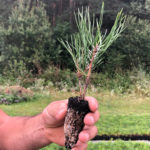
FOREST: I was born in Yugoslavia. The countless hands of Youth Work Actions built the new country’s transport infrastructure, its bloodlines; they planted the forest so that its young body could breathe, its blood circulate, to strengthen the heart, stimulate…
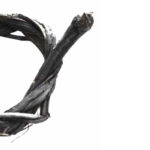
The idyllic, picturesque landscape in the mist: a mountain village located on the shores of Lake Hallstatt, steep roads meandering around the mountain, forests, rocks… A sublime landscape. Its geological formation dates back roughly 250 million years. Once upon a…
together with Jasper Rigole
Editions Menard N°22
2021, edition of 67
420 x 297 mm, 67 pages
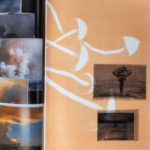
Elective Affinities is a project started in 2012 by Jasper Rigole, in collaboration with Egon Van Herreweghe. The project is inspired by the visual associative methodology developed by the German art historian Aby Warburgin his Mnemosyne Atlas. In each “edition” of this project,…
Installation / 99 ballpoint pen drawings on A4 paper
16 mm film, color, no sound, loop

“Take a new ballpoint pen. The simple one. The cheapest one. The most common one. Draw a line until the pen is empty. The length of the line is equal to the distance from the chair you sit in to…
Video, 1920 x 1080, color, no sound, 21’ 48”
Printed matter, 50×70 cm, offset print, color
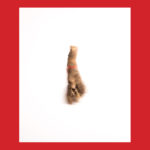
Common raskovnik is widespread in the mountainous area of eastern Serbia. It grows on dry stony ground, steep rocky slopes and dry mountain meadows. Raskovnik has been known for more than 2000 years, but due to the popular belief that…
Collective work, authors are as follows:
Milutin Dapčević, actor
Mirjana Dragosavljević, art historian and curator
Dušica Dražić, visual artist
Selena Orb, costume and stage designer
Vladimir Pejković, composer
Katarina Popović, graphic and process designer
Igor Vasiljev, stage designer
Tanja Šljivar, playwright
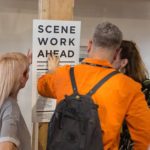
“Scene Work Ahead” is a result of collective work – a spatial, architectural and textual object which is activated by performing interventions and interacting with the audience in the course of the Quadrennial. This open and performative installation is designed…
together with Wim Janssen
Sculpture | A functional copy of ISKRA NP-21 cinema projector in bronze
Film | 16′ 30”, 35mm, color, academy ratio, no sound
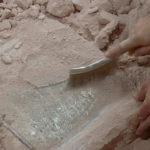
In Yugoslavia, after the end of World War II, a new and major importance was conferred to the role of cinema by the Tito regime. In a very short time, hundreds of new cinemas were built, Europe’s largest film studio…
Installation | Soil samples from the Swedish History Museum
Video | 60’40”, full HD, color, no sound
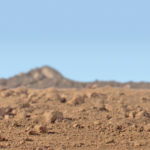
The Swedish History Museum stores about ten tons of soil samples from archaeological sites in Sweden and Sápmi, dating from the second half of the nineteenth century up to recent years. The collection carries an immense amount of data whose…
Sculpture | wood, 315 x 250 x 300 cm
Posters | offset print, 50x60cm each
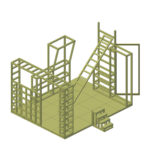
For the exhibition “Fiery Greetings”, curator Ana Adamović selected several photo albums from the archive of the Museum of Yugoslav History, for each artist taking part. In the albums I received, I noticed a fluent continuation of ideas and concepts…
Site-specific installation and performance | wooden object, 90 x 90 x 240 cm
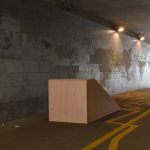
“Movement” was realised for BRDG, a public art project in a railway passage in the city of Antwerp. Artists are invited to intervene in or interact with the space. The work observes the movement of passers-by as a performative act…
Video | 47′, Full HD, color, no sound
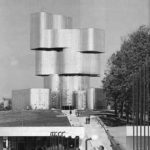
In the work “Premonition”, carried out during her residency in IASPIS Dušica Dražić examined the transformative process and the uncertainty of transformation. The point of departure for the inquiry is a stone fragment the artist found during a visit to…
Installation | 589 cm x 660 cm
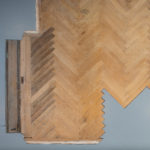
The floor of a private apartment was removed and precisely reconstructed in the exhibition. The blueprint of a home and a gallery overlapping. This merger created a sculptural space that has the imprints of micro-histories. The visitor walks over the…
dedicated to my father, Milutin Dražić
Sculpture | models of the forest, various dimensions
Archive BW photographs by Milutin Dražić | various dimensions
Profiles of trees
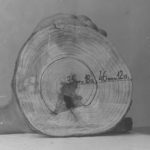
The aesthetic transformations of a landscape can give us a means to observe and analyze the economical, social and ideological changes of the times. In the period between 1973 and 1988 Pešter, a karst plateau in southwestern Serbia (at that…
Sculpture | Gypsum, 30 cm x 30 cm x 13 cm (each)
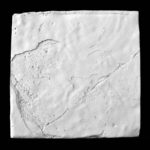
Looking at the landscape, observing its topography we stay in oblivion, not knowing how much time has past and how much force was needed to come to this moment we gaze into. By cutting into the landscape, we discover multiple…
Sculpture | maquette of a non-existing city, 1100 cm x 200 cm
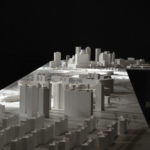
“New City” is a large maquette of a non-existing city. The buildings that this city consists of are chosen from projects that were actually built, but couldn’t reach their potential, missed their purpose and were eventually destroyed. The destruction was…
Site-specific performance
Photograph | c-print, 70 cm x 60 cm
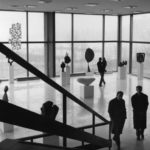
In July 2012, it was five years since the building of the Museum of Contemporary Art of Belgrade closed to the public due to reconstruction, adaptation and expansion works that have not been finished until the present day. The performance…
Site-specific installation
Artist’s guided walks
Artist’s book | 200 mm x 145 mm
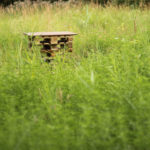
The correlation between industry, nature and culture was emphasized by the Dockville project. The transition from one into another is reflected in the present landscape, changing from year to year – from the uncontrolled nature of an abandoned industrial site…
Site-specific sculpture | reinforced concrete, 40 cm x 40 cm x 260 cm
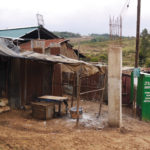
“Monument to the Future“ was realized in Kibera, the largest slum of Nairobi. In the midst of the makeshift houses, a pillar of reinforced concrete, in the proportions of European architectural standards was erected. Besides the symbolic gesture of placing…
Installation, Wall Drawing
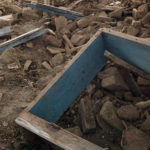
After an old house in Belgrade was demolished, all the rubble was transported to the gallery. The entire space was thus filled with the remnants of another house. Visitors were invited to walk over this rubble and look for traces…
Performance, Artist’s Book
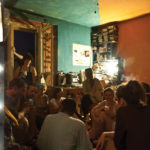
By removing the front door of an apartment I created a sensitive, vulnerable space. The private merged with the public. The opening where the door used to be became a zone of one and a zone of many – the…
together with Deqa Abshir
Object | Handmade coat, silk-screened cotton fabric
9 Photographs | C-print
Video documentation
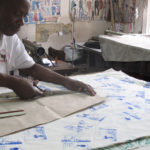
The Amazing Technicolor Dreamcoat refers to a musical from 1960’s that is still very popular in Kenya. It represents a transreligious story that appears in Bible, Quran and Torah. It is a story about a father who gave to his…
Installation | photo-diptychs (photo wall paper and light box)
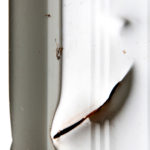
“The Event Place” is a series of photo-diptychs, focusing on places that are abandoned due to political, legal or economic reasons. The first segment of a diptych (a wall paper) is a photograph of an interior at night. A long…
Site-specific installation
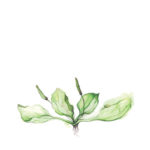
Wandering through the former Military Academy in Belgrade, I noticed how weeds occupied both the interior and exterior of the building. These plants exhibited a certain ambivalence: they were destroying the building, but also keeping it from falling apart. I…
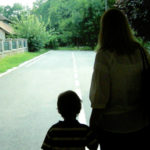
A L-shape corridor was constructed in the gallery. A light-box with the photo of a dead-end street was placed, forming an architectural element within the end of the existing space. The photo itself was an extension into public space, but…
























Recent Comments